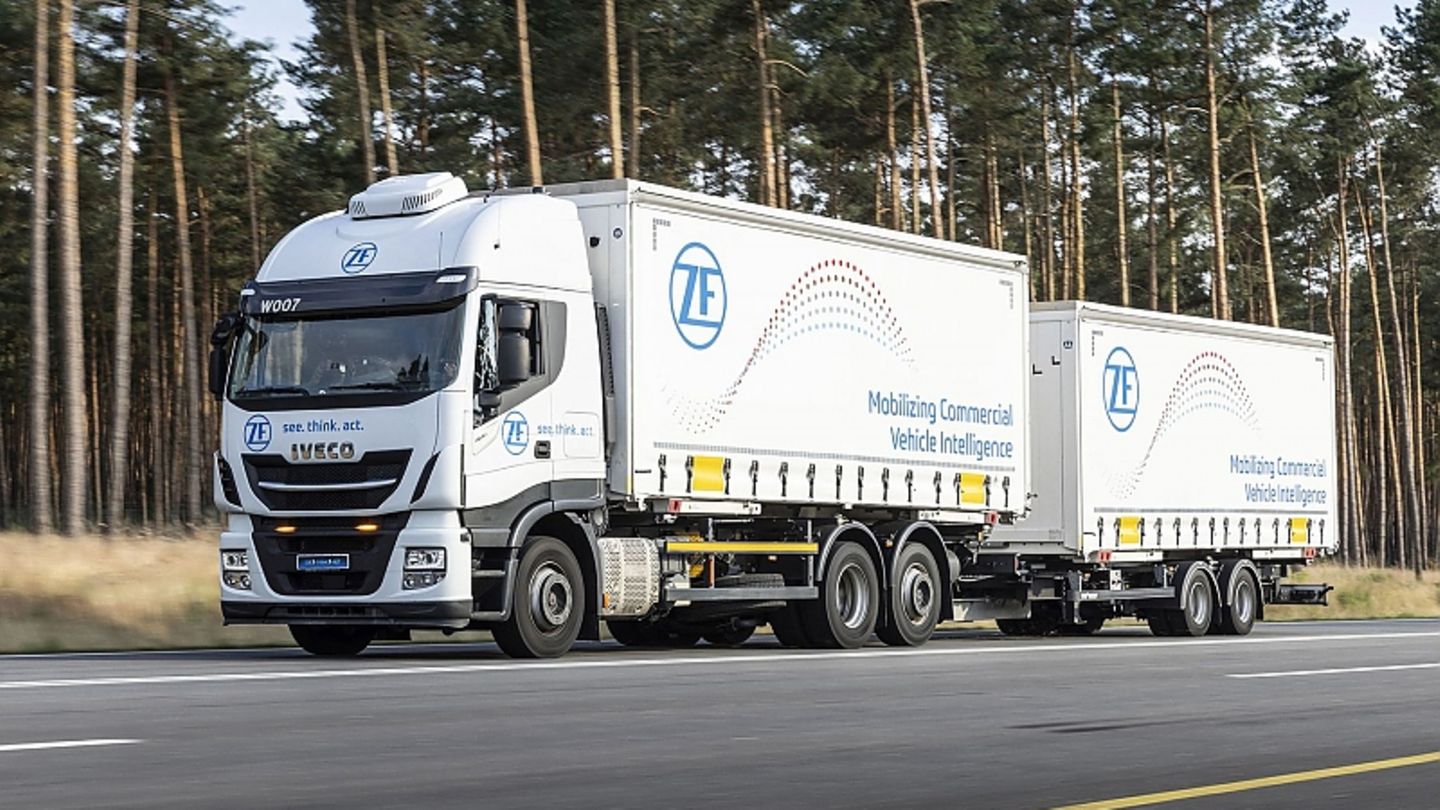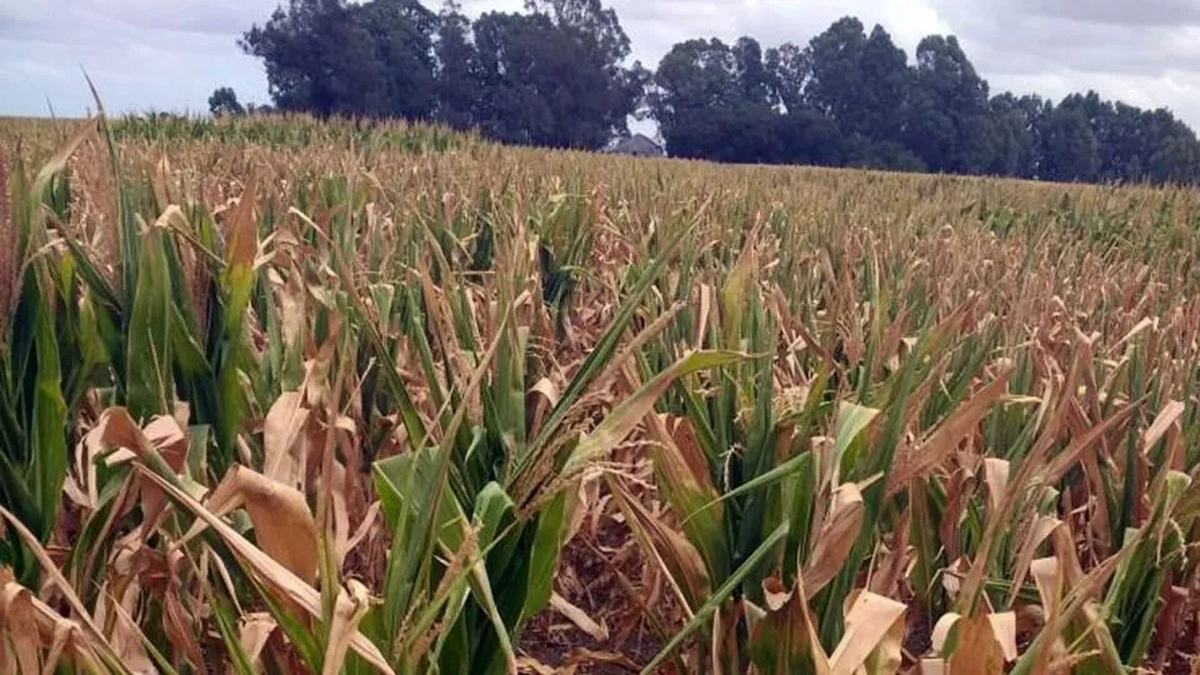After taking over the brake and vehicle control system specialist Wabco, ZF also has some plans for trucks. The supplier is blossoming into a system supplier and is bringing some exciting systems on the way to autonomous driving that make it much easier for drivers to act.
When it comes to the electrification of trucks, the plug-in hybrid is left out. The arguments are too expensive, too heavy, too complex. But ZF has another idea that also makes sense for the price-conscious penny-pinchers in the logistics industry. Why not just pack an e-axle and battery in the trailer? After all, they cover significantly more kilometers than the tractor unit and the investment is amortized over this longer life cycle. Sounds clear and simple. But how does the hybrid perform on the road with a trailer hitch?
We try it out and got into a truck. The prototype is equipped with an electric motor with 250 kW / 340 hp and a battery with a capacity of 80 kilowatt hours. After all, the e-machine is not constantly involved in propulsion, so the energy storage can be used for quite a while without having to be charged. “We will use a more powerful electric motor in the production version,” says ZF expert Bernd Meurer. The system is already working pretty well and supports the tractor when accelerating. The recuperation also works perfectly, which reduces the number of charging stops.
In daily use, the electrified trailer should save up to 6.5 l/100 km in fuel. With a team that is in use around the clock, quite a lot. If you equip trailers with fold-out aerodynamic flaps, fuel consumption is reduced to a possible 7.3 l/100 km. The vertically mounted spoiler alone brings a maximum of 1.5 l/100 km. “But you can’t add that up one-to-one in combination with the trailer,” explains Meurer. Legislation is currently putting a stop to this technology, because only agricultural trailers can be electrically operated, but there should be a change soon.
However, the possible uses of the e-trailer do not end with pure fuel savings. The technology also supports the driver when docking at a loading ramp with the help of sensors and cameras. “Here, inexperienced drivers cause most accidents,” explains Meurer. The ZF technicians are already thinking one step ahead and have a system up their sleeve that allows heavy vehicles to be maneuvered autonomously, including docking at the loading locks. To do this, the terrain must of course be precisely surveyed and state-of-the-art systems such as a LIDAR sensor must be integrated. This does not work with GPS alone.
The trend is clear. Driver assistance systems, which have already been introduced in passenger cars, should also be used in trucks. But it’s not that simple, a fully loaded 40-ton truck is already an announcement. The sheer weight complicates the application of fundamental systems that are essential for autonomous driving. You can see that in the electromechanical steering that ZF wants to bring onto the market in the middle of the decade. The four motors have to generate a torque of a whopping 8,000 Newton meters and consume three to four kilowatts in the process. “You have to make that available first,” explains the responsible technician, Till Mader. Apply is a good keyword: Transport companies traditionally have a hedgehog in their pocket. You only pay for something that makes money on the bottom line. But such systems help the driver and reduce downtimes due to failures.
It is clear that Level 4 autonomous driving will also come to trucks. “We currently do not see the issue of platooning or overhead lines,” explains ZF Commercial Vehicles boss Wilhelm Rehm, who is on the same wavelength as Daimler Trucks. The Friedrichshafen-based supplier also wants to develop into a system supplier for heavy vehicles, offering an all-inclusive solution that also includes the CeTrax 2 electric drive, which has a high continuous output of 360 kW / 489 hp and improved efficiency thanks to three-stage power shifting. Ultimately, smaller commercial vehicle manufacturers can then help themselves from the Friedrichshafen vendor’s tray and put together the right system. The takeover of the electronic braking and vehicle control system specialist Wabco was decisive on this path.
It is clear that Level 4 autonomous driving will also come to trucks. “We currently do not see the issue of platooning or overhead lines,” explains ZF Commercial Vehicles boss Wilhelm Rehm, who is on the same wavelength as Daimler Trucks. The Friedrichshafen-based supplier also wants to develop into a system supplier for heavy vehicles, offering an all-inclusive solution that also includes the CeTrax 2 electric drive, which has a high continuous output of 360 kW / 489 hp and improved efficiency thanks to three-stage power shifting. Ultimately, smaller commercial vehicle manufacturers can then help themselves from the Friedrichshafen vendor’s tray and put together the right system. The takeover of the electronic braking and vehicle control system specialist Wabco was decisive on this path.
As with the cars, there are still a few steps to be completed on the way to the robo-trucks, which means an immense gain in safety for the trucks. For example, ZF is working on an emergency brake assistant that can bring the truck to a standstill from 80 km/h if it detects a stationary obstacle. This would significantly minimize the risk of driving into a tailback. But the systems also prevent the truck from rocking and tipping over during quick evasive maneuvers or strong side winds, just as they do with cars today. This will make traffic on German trunk roads significantly safer.
Source: Stern
I am a 24-year-old writer and journalist who has been working in the news industry for the past two years. I write primarily about market news, so if you’re looking for insights into what’s going on in the stock market or economic indicators, you’ve come to the right place. I also dabble in writing articles on lifestyle trends and pop culture news.




